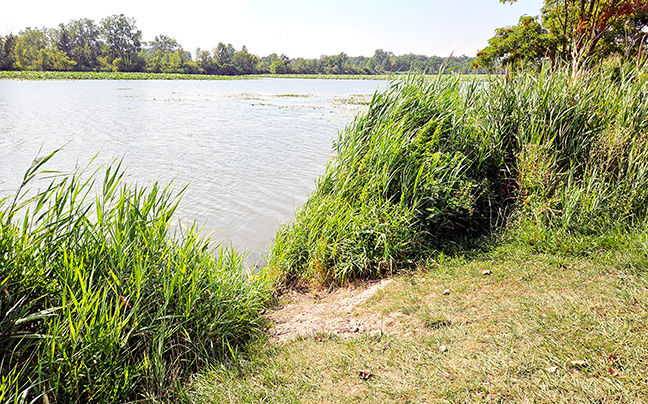Committee updated on phragmites program
- Ron Giofu

- Aug 12
- 3 min read

The town received some grant funding for phragmites control in the Big Creek watershed area and the environmental advisory committee got a further update on the phragmites program.
That update came during last Thursday evening’s committee meeting at town hall, with manager of roads and fleet Eric Chamberlain making a presentation on the phragmites program.
Chamberlain said prior to 2017, the town’s drainage superintendent would include phragmites control in the municipal drain project.
Spraying was before maintenance was completed, with Chamberlain stating there was “great success” with little regrowth, a reduction transferring phragmites into fields and assistance to farmers by working excavating material into fields.
In 2017, Chamberlain told the committee the roads manager and drainage superintendent prepared a plan to create a phragmites control program.
Mapping was completed along both town and county controlled roads, municipal drains and “fringes” of River Canard and the Big Creek complex.
That mapping has continued to track the progress and treatment areas, he stated.
An initial budget of $20,000 was established in 2018 and was increased to $30,000 in 2022 in an “attempt to treat locations off the roads such as storm ponds and municipal drains.” Chamberlain said the County of Essex has been providing $10,000 per municipality for treating properties.
The Collavino Conservation Area near River Canard off of North Side Road came under ERCA’s umbrella in 2022, Chamberlain noted, and ERCA treated phragmites with herbicide and a prescribed burn.
An experimental moth was deployed in the same area, he added.
Environmental improvements that Chamberlain cited following spray application was growth of Old Cattail in ditches and drains, meaning less area for phragmites to grow.
Chamberlain recommended future aquatic plants to be planted in areas that don’t have any natural growth.
“Areas need to have alternate competition to choke out the phragmites,” he said. “The less phragmites growing in the ditches, drains and landscape reduce the chances of reinvention and reduces overall cost of treatment and maintenance.”
Next steps outlined by Chamberlain to the environmental advisory committee that are planned include continuing to map, spray and cut phragmites, expand into working landowners and the county’s working group on phragmites to treat and cut the invasive species on private property, the latter point being “a large undertaking” as special equipment and landowner approval would be needed.
Chamberlain added municipal drains may be an easier project as access to the land is simpler, phragmites have been mapped and treatment can be formed as part of the drain maintenance projects.
ERCA was the lead on the recent grant application to the Nature Conservancy of Canada and the region received $100,000, $13,100 of which will come to Amherstburg. It is for further mapping. Chamberlain said there will be further efforts made to obtain grant funding.
Chamberlain agreed with a statement from committee chair John McDonald that municipal representatives and ERCA “have a handle on it” but it will take time and additional funds to overcome the challenge. Chamberlain reiterated access to private lands will help, and is hopeful that some access can be granted.
Regarding the experimental moth project ERCA is obtaining at the Collavino lands, Councillor Molly Allaire said it is a moth that attacks the root system of phragmites.
“Once that food system is gone, the moths disappear,” said Allaire, who is also chair of the ERCA board of directors.
Allaire added it is a small project for now and that it takes five years to see substantial results, and they are about two to three years into it.
Committee updated on phragmites program
By Ron Giofu









Comments